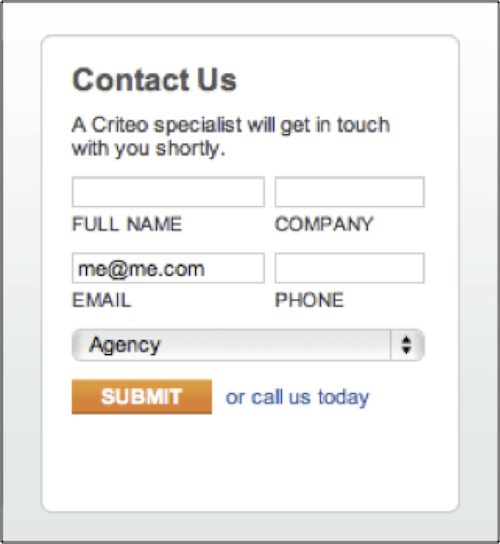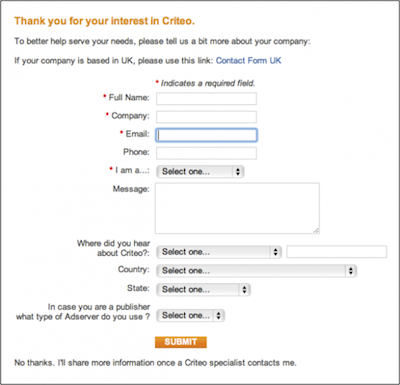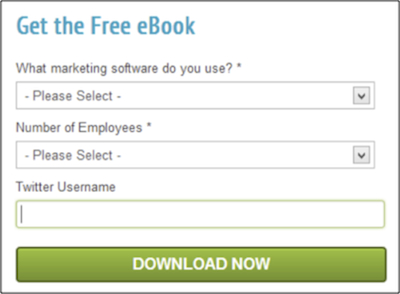 More customer data means better personalization and a better overall customer experience. But here’s the paradox: Customers often don’t want to share their information, even if it will improve the marketing they’ll receive. It’s understandable; in today’s age of privacy concerns and overflowing inboxes, most people are hesitant to offer up even the most basic of information.
More customer data means better personalization and a better overall customer experience. But here’s the paradox: Customers often don’t want to share their information, even if it will improve the marketing they’ll receive. It’s understandable; in today’s age of privacy concerns and overflowing inboxes, most people are hesitant to offer up even the most basic of information.
So how can you overcome these hurdles and collect the demographic and lifestyle data you need for quality marketing content? Here are four ways to get more customer data with less customer concern:
Add More Fields to Your Forms
These days, everyone has a subscribe form on their website, and everyone’s been told to ask for as little information as possible: an email address and maybe a first name. As common wisdom has it, long forms turn off potential leads and reduce your response rates.
And though it may be true that having too many fields on your forms is not a good idea, you may be able to squeeze a little more information from your leads without negative consequence if you’re strategic about it.
For instance, a form that takes up less physical space can appear to be less intimidating-even if it asks for more information. Mona Elesseily at Search Engine Land suggests adding two fields per line or reducing the amount of white space between each field.
Take a look at this form from Criteo.com. It’s tiny, unobtrusive and asks for five pieces of information!

Where things really get interesting, though, is the next step of the Criterio.com signup process. That’s right, there’s a page two.

According to Mona, these two-page forms (and even three-page forms!) can often convert better than a single-page one.
Use smarter forms
When customers return to your website, you don’t want to annoy them by asking for the same information over and over. To avoid annoying repetition, the key isn’t removing forms; it’s making them “smarter.”
With smart forms, the first time a customer takes action on your website, he’ll be asked for standard fields like first and last name, job title and email address. Then, should he return and download more content, the form will change. This time around, he might be asked how big his company is, what marketing software he uses or what his agency’s Twitter handle is.

By switching things up automatically, you can gain terrific depth of information without terrific irritation.
Survey Your List
As Bradford Shrimp of Batchbook reminds us, “You don’t need to collect all of your data up front.” Once you’ve established a relationship and some trust with a contact, don’t be afraid to go back and ask your contacts for more information.
Batchbook, for instance, regularly sends out email surveys asking contacts for additional information such as job title or pressing business concerns. Others companies collect extra data the old fashioned way by jotting down notes during calls with clients.
However you choose to do it-be it through surveys or chats-make sure you’re being transparent. Tell your customers what data you’re looking for and how it will help you (and them). With transparency, your customers will understand that you won’t betray their trust, and they’ll feel better about helping you send them the marketing they want to see.
Pull Together Data from Other Sources
Email intelligence and data enhancement services can also provide fresh insights into your contact list. These data services allow you to fill in the blanks on critical details such as postal address and social media profile. You can also uncover hard–to–find but highly fruitful demographic details like age, marital status, occupation and education.
Additionally, data append services let you capture this information automatically every time a new contact submits a subscription form. When a new contact enters an email or postal address, the integrated service appends the additional details to the record in real time. By some measures, you may be able to tie data to as much as 80 percent of your list.
Ultimately, the more you know about your contacts, the more targeted and relevant your marketing will be. Whether through smart forms or third-party data append, however you find this information, put it to good use and watch your results soar!
Curious to see the difference email intelligence can have on your own list? Contact TowerData for a free Email Intelligence Test today!
 Affiliate Marketing
Affiliate Marketing Automotive
Automotive eCommerce and Retail
eCommerce and Retail FinTech
FinTech LeadGen
LeadGen Nonprofit and Political
Nonprofit and Political Payments
Payments Technology Platforms
Technology Platforms Tourism and Hospitality
Tourism and Hospitality
 More
More 


